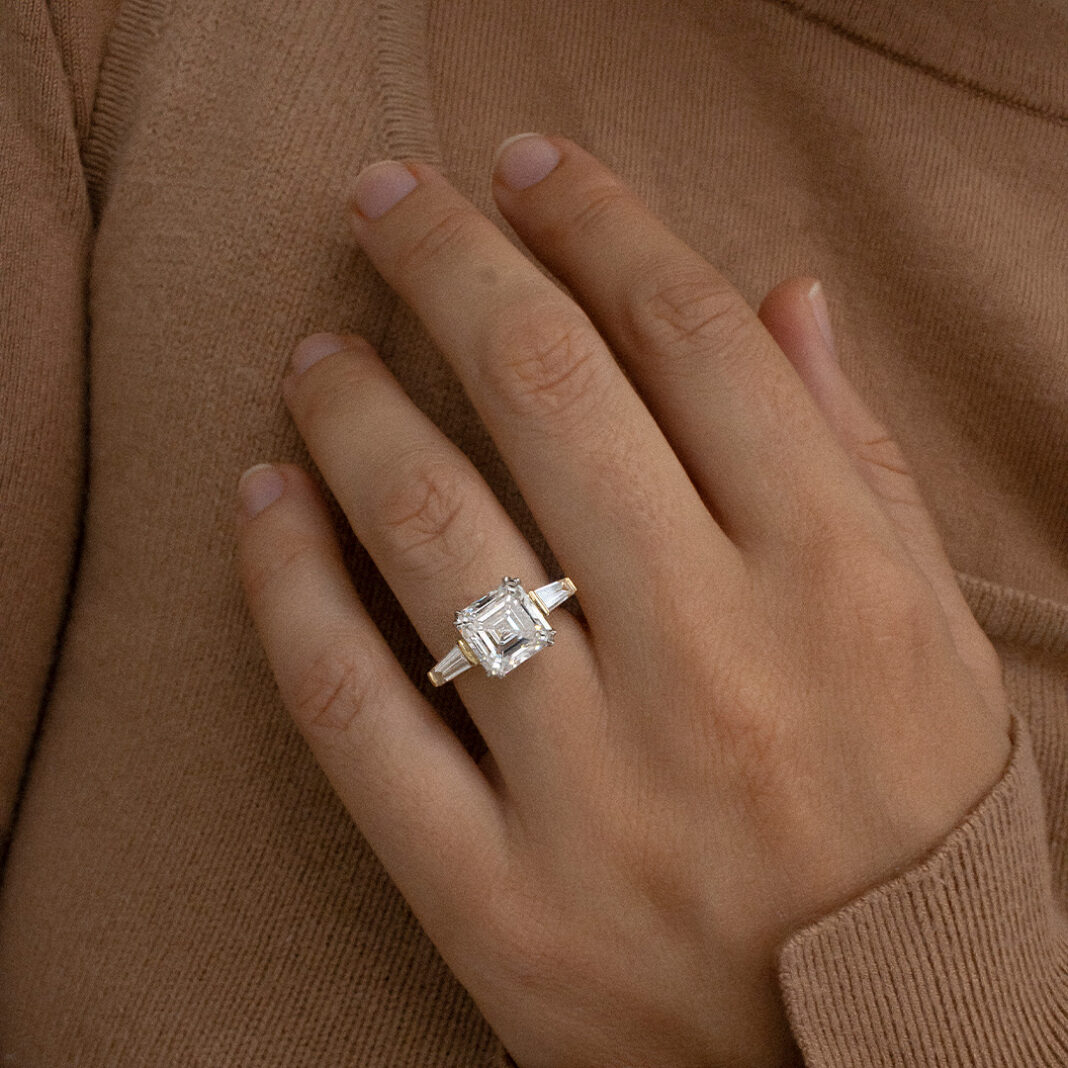There are many different cuts for diamonds, and each one presents the clarity and brightness of the stone in a different way. Among these, the Asscher cut is particularly famous due to its classic elegance and alluring symmetry. In addition to having withstood the test of time, this cut has developed into a favorite among connoisseurs and diamond fans. This article examines the history, traits, and timeless appeal of Asscher cut diamond rings.
The Origins of the Asscher Cut
In 1902, the Asscher cut was invented by Joseph Asscher, the founder of the Asscher Diamond Company in Amsterdam. The Asscher family was already well-known in the diamond industry, but a new standard in diamond cutting was set by Joseph’s innovation. The design of the Asscher cut was revolutionary for its time, with clarity and luster emphasized through a unique cutting technique.
Characterized by its large step facets, high crown, and deep pavilion, the Asscher cut is a square emerald cut. A hall-of-mirrors effect is created by these elements, with light reflecting dramatically within the stone. The cut was specifically designed to maximize the brilliance and clarity of the diamond, making it stand out from other cuts available at the time.
The Art Deco Era and the Rise of the Asscher Cut
Immense popularity was gained by the Asscher cut during the Art Deco period in the 1920s and 1930s. The bold, architectural designs of Art Deco jewelry were perfectly complemented by the geometric precision and elegance of the Asscher cut. The modernist aesthetic central to Art Deco was embodied by the clean lines and symmetrical facets of the Asscher cut, making it a sought-after choice for engagement rings and other fine jewelry.
The Asscher Cut Renaissance
While a decline in popularity seen by the Asscher cut during the mid-20th century, a renaissance experienced in the late 1990s and early 2000s. A renewed appreciation for vintage and antique jewelry, as well as improvements in diamond cutting techniques, can attributed to this resurgence. Modern Asscher cuts, often referred to as “Royal Asscher cuts,” feature additional facets that enhance the stone’s brilliance while retaining the classic step-cut appearance.
Innovation and refinement of the cut continuecarried out by the Royal Asscher Diamond Company, still operated by the Asscher family. The modern Royal Asscher cut, boasting 74 facets compared to the original 58, allows for greater light reflection and a more dazzling display.
Characteristics of Asscher Cut Diamond Rings
Asscher cut diamonds distinguished by their distinctive shape and facet structure. Key characteristics include:
Shape: A square with truncated corners, giving it an almost octagonal appearance.
Facets: Step facets, parallel to the girdle, creating a tiered effect similar to a staircase.
Crown and Pavilion: The high crown and deep pavilion contribute to the cut’s depth and brilliance.
Hall-of-Mirrors Effect: The step facets and precise symmetry result in a mesmerizing interplay of light and dark, reminiscent of a hall of mirrors.
Popularity and Modern Trends
Today, 5 Carat Asscher Cut Diamond Ring are favored for their vintage charm and sophisticated appeal. Classic elegance and refined taste are often appreciated by those who choose them. Celebrities and public figures have also contributed to the popularity of Asscher cut engagement rings, with their timeless beauty showcased on red carpets and in public appearances.
Conclusion
The Asscher cut diamond ring, with its rich history and distinctive characteristics, remains a symbol of timeless elegance and meticulous craftsmanship. From its inception in the early 20th century to its modern-day renaissance, the Asscher cut continues to captivate those who appreciate the blend of tradition and innovation in fine jewelry. As a testament to its enduring allure, the Asscher cut diamond ring remains a cherished choice for engagements, anniversaries, and other significant life events, with the timeless beauty of diamonds embodied in a uniquely stunning form.
